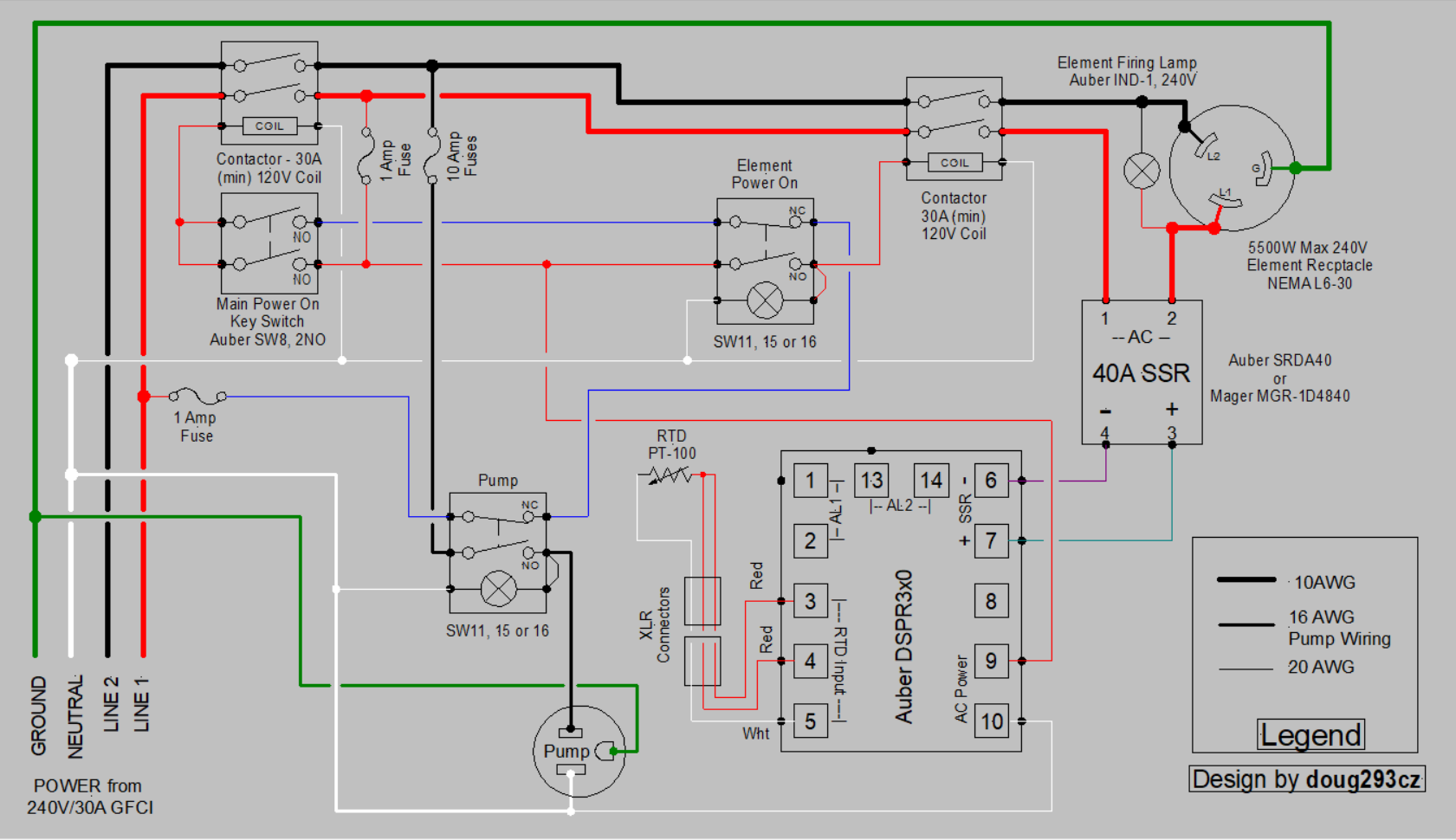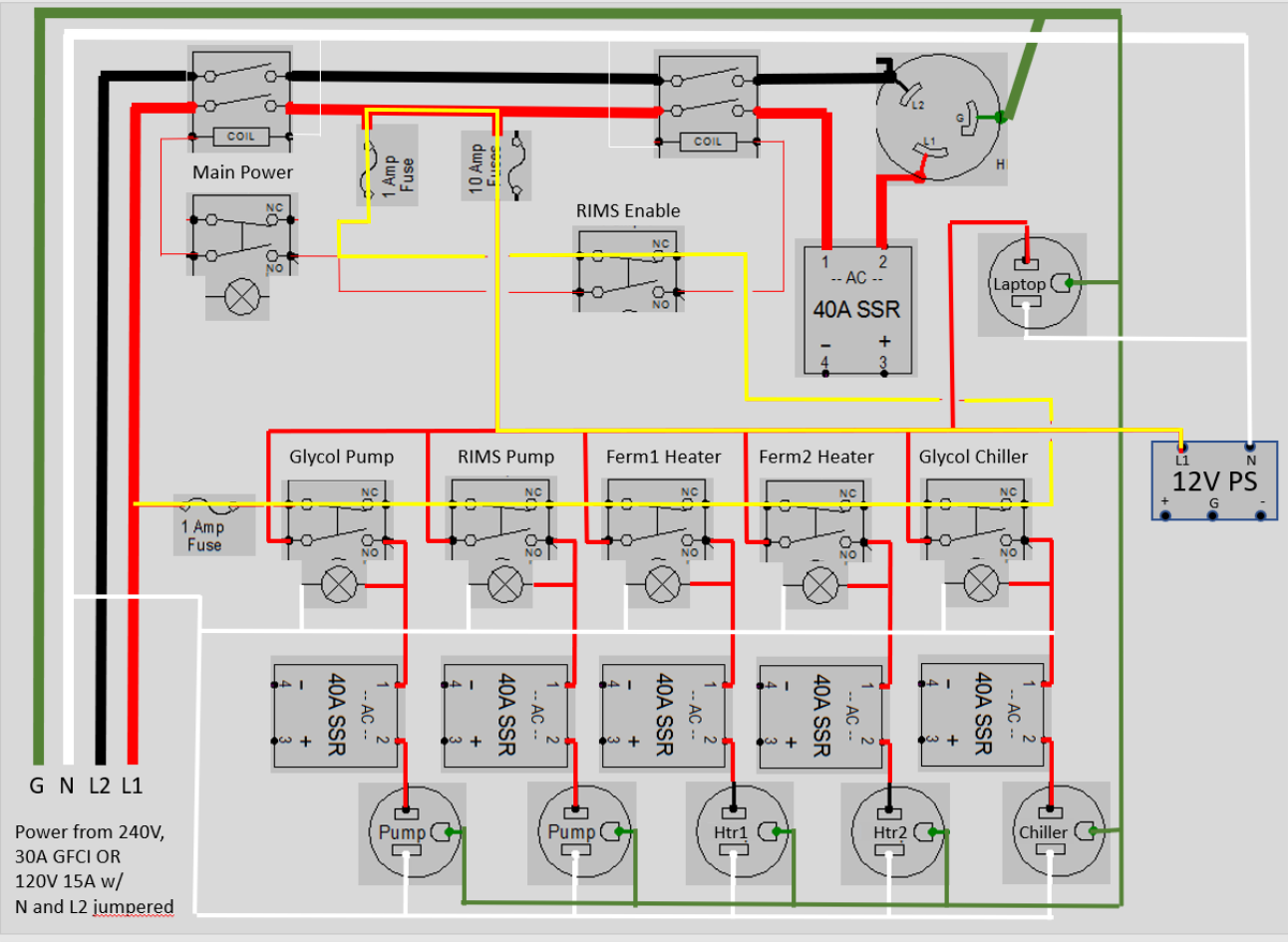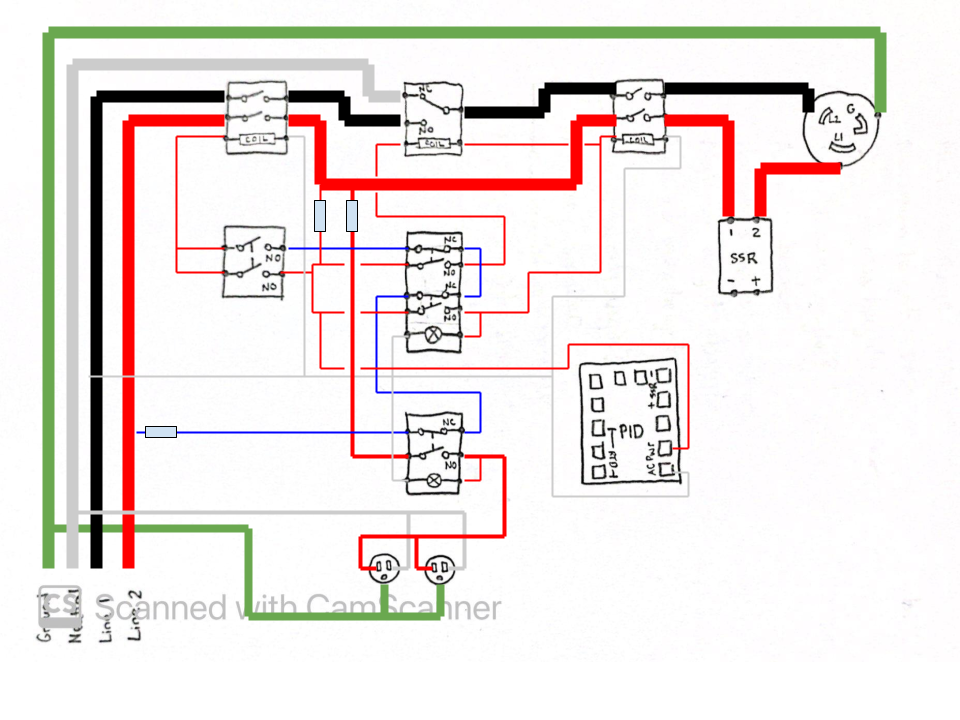- Joined
- Oct 25, 2008
- Messages
- 146
- Reaction score
- 22
I built a air conditioning unit based glycol system for two fermenters several years ago. I am working on adding a RIMS to this setup and am redoing the control panel from scratch. I have read a lot of threads here and have leveraged heavily from doug293cz's great work (OK, stolen or plagiarized is probably more accurate). In this case, I am looking to be able to plug into 120V to control the fermenters (AC unit, pump, flexwatt heater tape) OR plug into 240V when mashing for the RIMS. The main reason is the 240V is across the garage from where the fermenters sit, and I want to just be able to connect a cable when brewing and need the RIMS to 240V, but not have to move the 240V recepticle. The fermenters are next to 120V power. My control panel will have one L14-30 input. I will have a pigtail to connect to 120V and will tie Line2 and neutral together. I am hoping to get some help from the community to make sure I have this right.
Here is the HV wiring:

Here is the HV wiring:











